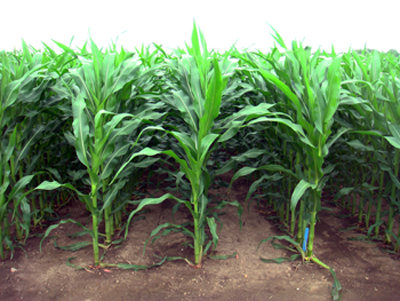Attaining 300 bushel yield with late planted corn
On-farm research aims to demonstrate the potential of two corn hybrids to interact with narrow rows, population densities and nitrogen to produce a 300-bushel yield goal.

Hybrid selection, plant population and nitrogen management are among the top five factors contributing to corn yield. Michigan State University Extension and Dekalb/Asgrow have collaborated once again in a research project to test two modern hybrids, DKC48-12RIB and DKC50-84RIB, at two row spacings of 20 and 30 inches, three population rates of 30,000, 36,000 and 42,000 plants per acre, and two nitrogen (N) rates of 120 and 240 N per acre on a highly productive soil at the Mason Technology Center in Michigan’s Ingham County. The overall objective is to find out how two hybrids will interact with non-limiting plant densities and nitrogen to produce the highest number of harvestable ears and largest grain yield per acre.
So much has been said about the importance of the right planting date on Michigan corn yield. This year, our trial was planted on May 28, 2014 – about three weeks later than the desired planting date. Initially, we expected the goal of achieving the 300 bushels per acre yield would be a challenge this year. However, corn has been growing vigorously so far this year in part due to plenty of summer rainfall.

Corn growing in 30-inch conventional rows.
Thanks to these resilient hybrids, there is renewed optimism that perhaps we could attain the 300 bushels per acre yield goal. We are hoping that the built-in, late-season plant health virtues, such as the insect and disease resistance, nitrogen utilization and stalk strength of these hybrids will compensate for delayed planting and that there will be no early season frost. Farmers will need to achieve such yield levels in a changing climate if they are to meet the global demand to feed a world population projected to be nine billion by 2050.
Testing how these hybrids perform under diverse agronomic conditions will also provide valuable data to help growers who wish to apply variable rate technology to planting populations and nitrogen rates in the future. Dealing with heavy residues at higher corn populations will need attention as a management issue. We recognize that transforming to a 20-inch row corn production system would require some extra investments and equipment modifications for planting, nitrogen sidedressing and harvesting. The economic aspects of growing corn using different treatments will be evaluated following grain harvest.
This study is being funded by Michigan Corn Marketing Program and Corn Growers Association.



 Print
Print Email
Email


